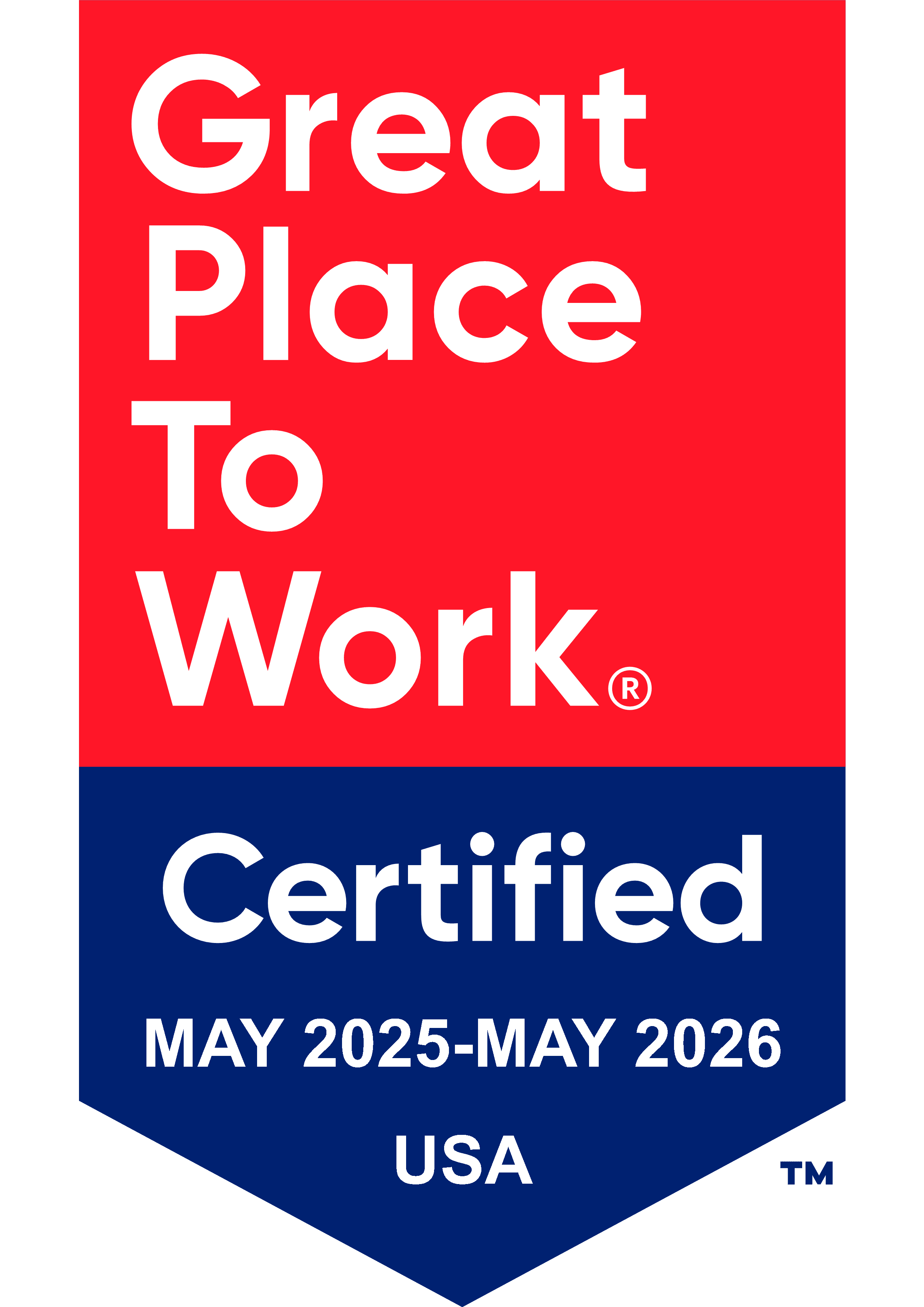Earlier this summer, CPHSS’s Zara Petkovic and Laura Brossart led a webinar to guide attendees through the research behind CADCA’s Coalition Competencies and provide insights on how coalitions can begin building stronger internal communication processes.
CADCA’s Coalition Competencies cover three main domains: operations, community, and prevention. They were developed through a four-step process recommended by the Federal Employment and Training Administration and reviewed by coalition leaders and CADCA staff with varied backgrounds. The Internal Communication competency, which is part of the operations domain, focuses on how coalition members communicate to manage work, make decisions, and achieve shared goals. Zara introduced the knowledge, skills, and abilities associated with the competency, including things like understanding group dynamics, effectively engaging in group decision-making, developing systems to support communication and information distribution, and more.
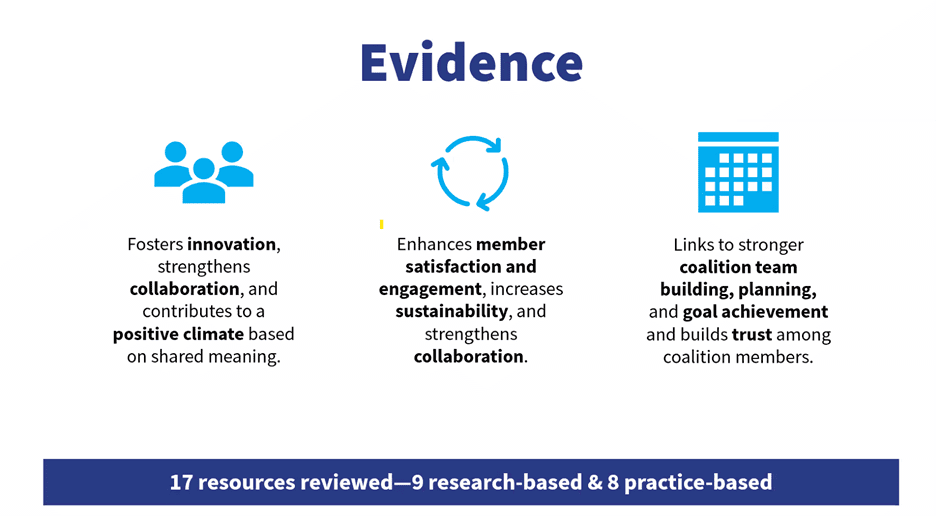
Laura provided a detailed real-world example from the ASPiRE Center, a five-year NCI-funded collaborative that studies the tobacco retail environment and works with communities to translate research into practice. ASPiRE’s Community Advisory Board (CAB) featured representatives from 30 major U.S. cities, collectively representing 15% of the U.S. adult population, alongside organizational partners with legal and advocacy expertise.
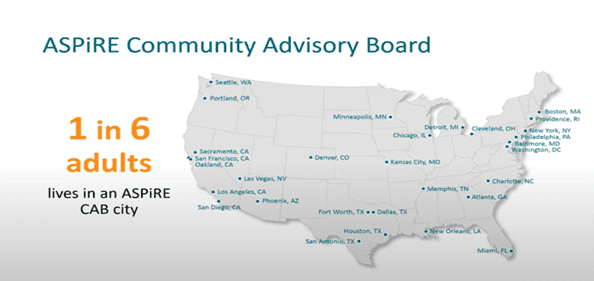
While not a community coalition in the traditional sense, the CAB shared key similarities, such as fostering collaboration, involving participation from community members with varied voices, and addressing community needs. Laura emphasized that communicating with the CAB through multiple channels was really important for effectiveness and trust-building.
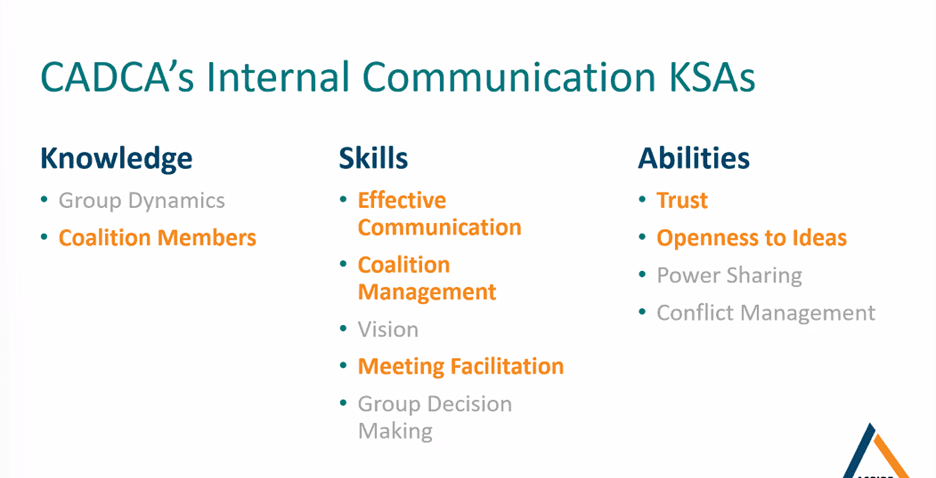
From the start, ASPiRE’s team asked CAB members about their communication preferences through interactive live polling, then designed engagement methods accordingly. Over the five years, they used a mix of in-person and virtual communication methods, including:
- Annual Convenings: 1.5 day in-person gatherings that created a space for networking, learning, and collaboration (moved online during the pandemic)
- Webinars: Twice-yearly Zoom calls that welcomed and introduced new members, shared the latest research products, and gathered feedback on products to make them more relevant and impactful. These sessions encouraged peer learning and kept members connected between larger meetings.
- Bi-Monthly E-Newsletter: Delivered 28 times over the project’s lifespan, the newsletter contained concise summaries of research findings to keep members informed about the latest progress. The personalized messages helped maintain a sense of belonging.
- Informational Website: Launched in April 2020, the website became a central hub housing all the research products and retail policy resources. Between April 2020 and March 2025, it gained 95,000 page views from over 234,000 users.
- MyASPiRE Private Message Board: All CAB members were automatically added to a message board intended to be used as a private communication space. The portal was promoted repeatedly though emails, calls, e-newsletters, but it never received significant uptake. This highlighted the lesson that it’s often better to connect through existing platforms and networks instead of introducing entirely new ones.
Another crucial aspect of this process was better understanding members’ wants and needs with regards to preferred communication methods. Live polling during meetings revealed that CAB members preferred receiving updates via email (33%) and webinars (31%), with most members (46%) wanting monthly updates. They favored fact sheets, case studies, policy briefs, and infographics over lengthy research articles and primarily intended to share resources with city councils, community members, and department staff. This feedback directly shaped the design and prioritization of ASPiRE’s products.
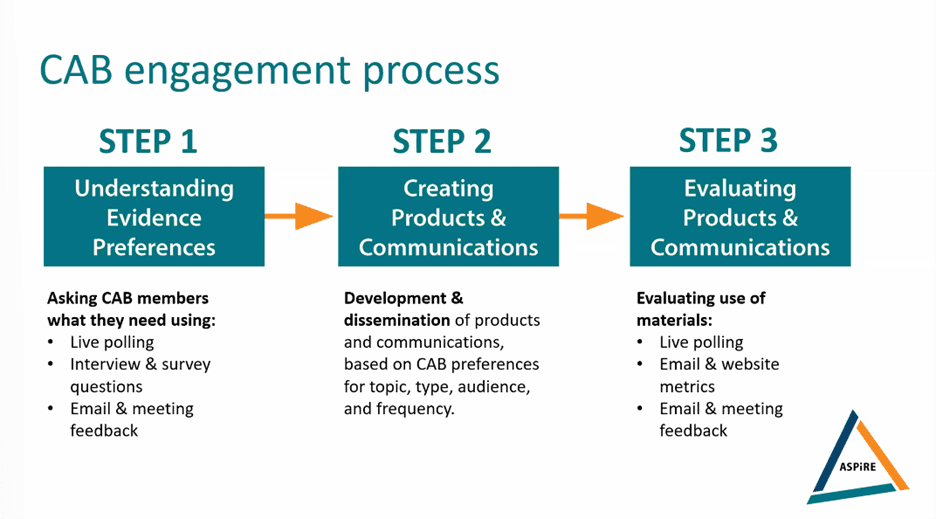
Evaluation was built into every step. After distributing resources, the team followed up to see how members used them and who they shared them with, making ongoing adjustments. CAB Chair Maggie Mahoney, JD, noted that the researchers’ commitment to making their work accessible and their respect for members’ time were central to the CAB’s success, principles that apply to any group working toward a common goal.
For coalitions looking to strengthen their internal communication KSAs, CADCA offers in-depth training through its flagship Academia da Coalizão Nacional, customized training and technical assistance services, and events like its National Leadership Forum and Mid-Year Training Institute.
Watch the webinar recording here to learn about steps you can take to better incorporate internal communication into your efforts. Join our next webinar in the Competencies in Focus series on August 21 at 2 PM, as we take a closer look at the policy competency.


